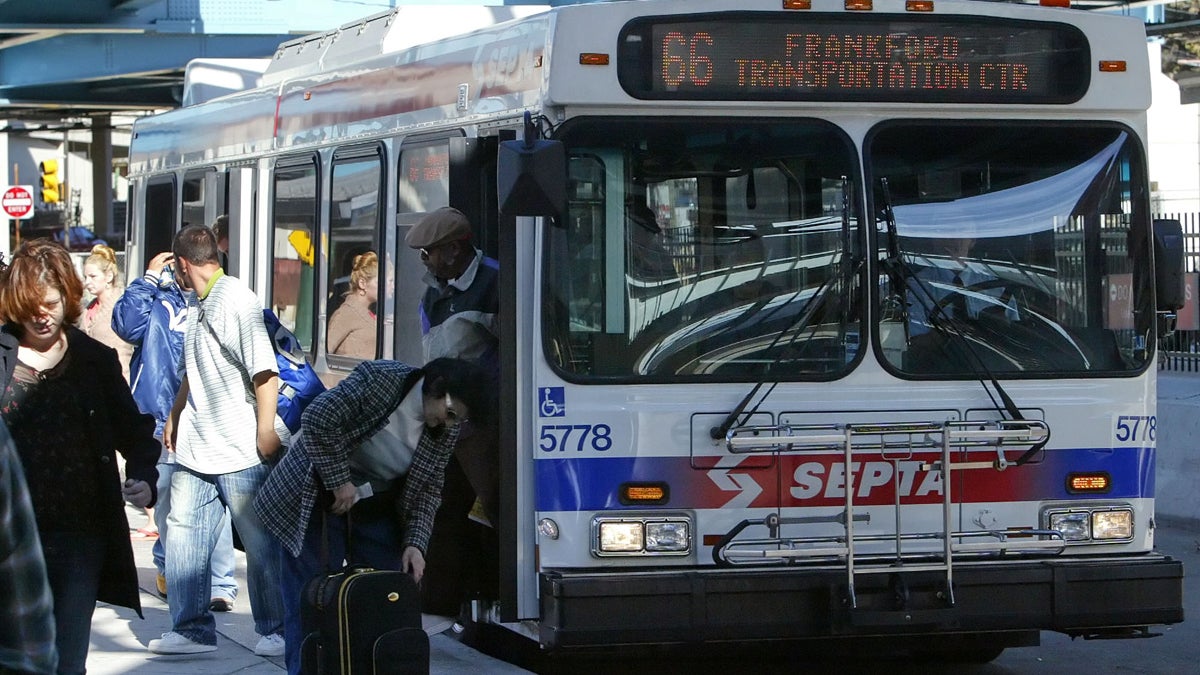Advice to riders: That late SEPTA bus is an exercise in patience

(Joseph Kaczmarek/AP Photo)
Buses get a bad rep, but I enjoy them for two reasons: First, they allow you to take in the sights around you, see new businesses opening, historic details, street art, people in their flow. Second, and probably more importantly, they have made me a more patient person.
Taking a bus is a chance to stop hustling and just take in life. I can relax and become a passenger — or read, catch up on Twitter, listen to music — all while getting to where I’m going. I think this of most modes of public transit, but it is especially true of buses. I find patience, like will power, is equivalent to a muscle that benefits from regular use.
In praise of waiting
Impatience can also be exercised and made stronger, can become a bad habit. We can get so frustrated when our regular rituals are interrupted or delayed. It produces a certain type of crankiness in an age when so many of us are addicted to on-demand services. It’s like being “hangry” — when someone too busy to eat gets angry because of their hunger, usually without their realizing either.
Waiting for a bus, what most people decry about the experience, is not a burden; it’s an opportunity. It’s your choice to be frustrated, or to use the time for something else. Not all of us have the privilege to choose between several transportation options, to be annoyed when our plans go awry. It takes energy to be annoyed, and that energy can be better spent.
I learned this riding transit, buses in particular. People complain about slowness, missed stops, being passed over by a full or out-of-service bus — but usually these gripes result from completely external factors: delivery vans stopped where they shouldn’t be, a funeral procession crossing the path, normal street traffic. The bus has its route. It will make its way the most efficient way it can — just one part of a larger system, trying to keep all the folks moving at an interval that suits both the demand and the supply of service.
Appreciating the urban mix
Also worthy of praise is a bus’ accessibility. Whether slowed down by a physical disability, heavy luggage, or a small child, a rider is more likely to find a kneeling bus than a subway station with the ramp, escalator or elevator that would make the trip easier. Infrastructure of this sort is costly to build and maintain, and in some cases would just not be feasible.
I’ve taken the bus first thing in the morning, and I’ve taken the “Nite Owl” after midnight. Sometimes I’ll hear small kids singing their favorite song, or an enthusiastic retelling of events at school or the office, or the occasional intoxicated rambler — an essentially urban mixture of accents, languages, genders, ages, and styles. When peope gripe about the bus, it’s often a class issue. We too often create bubbles around ourselves, limiting the diversity of our experiences.
I’ve seen some colorful characters — some who might verge on security concerns. Though I personally haven’t felt unsafe waiting for a bus in the nine years I’ve lived in various parts of the city, I understand how one could. But mostly you’re just seeing people trying to get where they’re going.
A little patience
Transit, particularly in the USA, has the difficulty of pleading for increased funding so agencies can support greater demand. And greater demand increases wear of continuously under-funded equipment. People who have traveled abroad may marvel at the subway systems in Europe, the high-speed trains in Asia, or the bus rapid transit successes in South America, returning home greatly disappointed by our equivalents.
Would I like to see some improvements for buses in Philadelphia? Certainly. That would include passengers not leaving their trash on board; improved, better-marked bus stops; perhaps some dedicated bus rapid transit routes (e.g., Delaware Avenue, a modified City Branch). As more people ride, more service can be added, and improvements made.
I’m encouraged by SEPTA’s 24/7 weekend subway service being piloted this summer, but I haven’t been dissatisfied by the Nite Owl buses that provide the overnight service now. I see this pilot as the next step of many planned, to improve a vital piece of this great city.
This is the cycle of transit, and following a fortunate increase in ridership, we now just need a little patience.
—
A Philadelphian with a California kernel, Kara Lindstrom is a designer, transit nerd, and urban geek. When she isn’t exploring the city with her two feet and a SEPTA pass, she serves as Enabler of the ExCITe Center at Drexel University.
WHYY is your source for fact-based, in-depth journalism and information. As a nonprofit organization, we rely on financial support from readers like you. Please give today.

